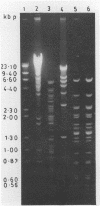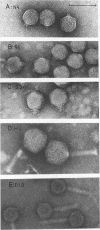Abstract
The conventional phage typing scheme proposed by S. Basu and S. Mukerjee (Experientia 24:299-300, 1968) has been used routinely for identification of the strains at the Vibrio Phage Reference Laboratory since 1968. However, because of limitations of this scheme, a new phage typing scheme using five newly isolated phages was incorporated into the conventional scheme. A different definition of routine test dilution (almost confluent lysis) was found to be more useful than the one previously used (confluent lysis). The 1,000 strains tested could be clustered into 27 types with the five new phages. With the new scheme of 10 phages (5 new phages and 5 phages of Basu and Mukerjee), the 1,000 strains could be grouped into 146 types. The new phages were different from each other and also from those of Basu and Mukerjee, as revealed by lytic pattern, electron microscopy, restriction endonuclease digestion, sodium dodecyl sulfate-polyacrylamide gel electrophoresis, and antiphage antiserum studies. With the new typing scheme, 99.6% of the strains were typeable. Phage type 115 was the most common and includes 119 (11.9%) of the 1,000 strains tested. Next most common were phage types 142 (9.4%), 143 (7.0%), 104 and 116 (both 5.4%), 3 (5.3%), 5 (4.1%), 4 (3.9%), 24 (2.1%), and 100 (1.7%). The larger number of types would be useful for further classification of the strains for epidemiological purposes. This newly developed scheme is highly applicable to, and could be widely adopted for, phage typing of Vibrio cholerae O1 biotype El Tor strains.
Full text
PDF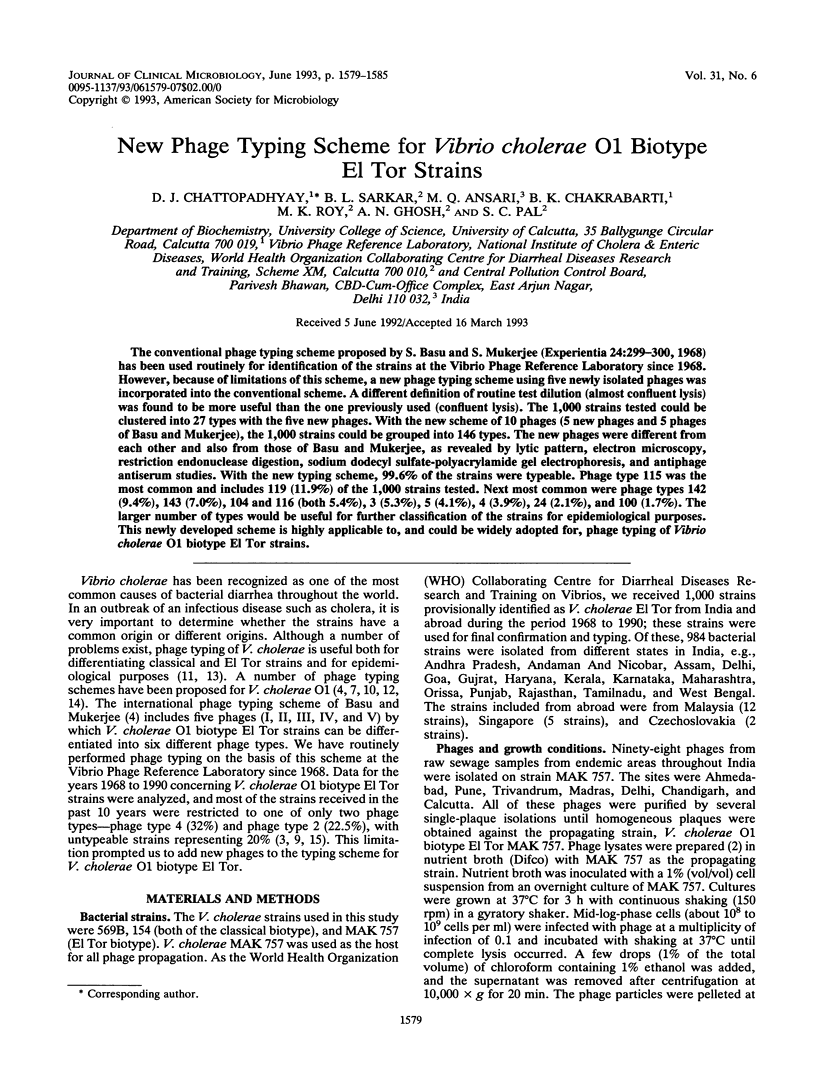


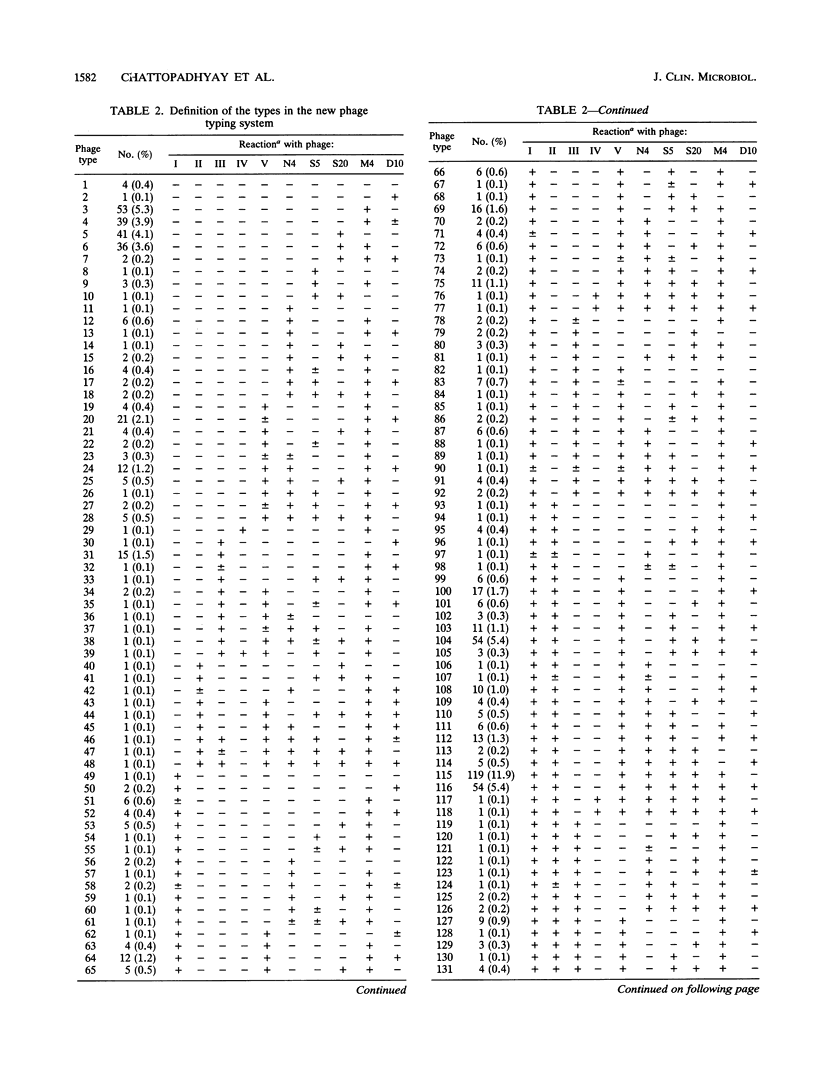
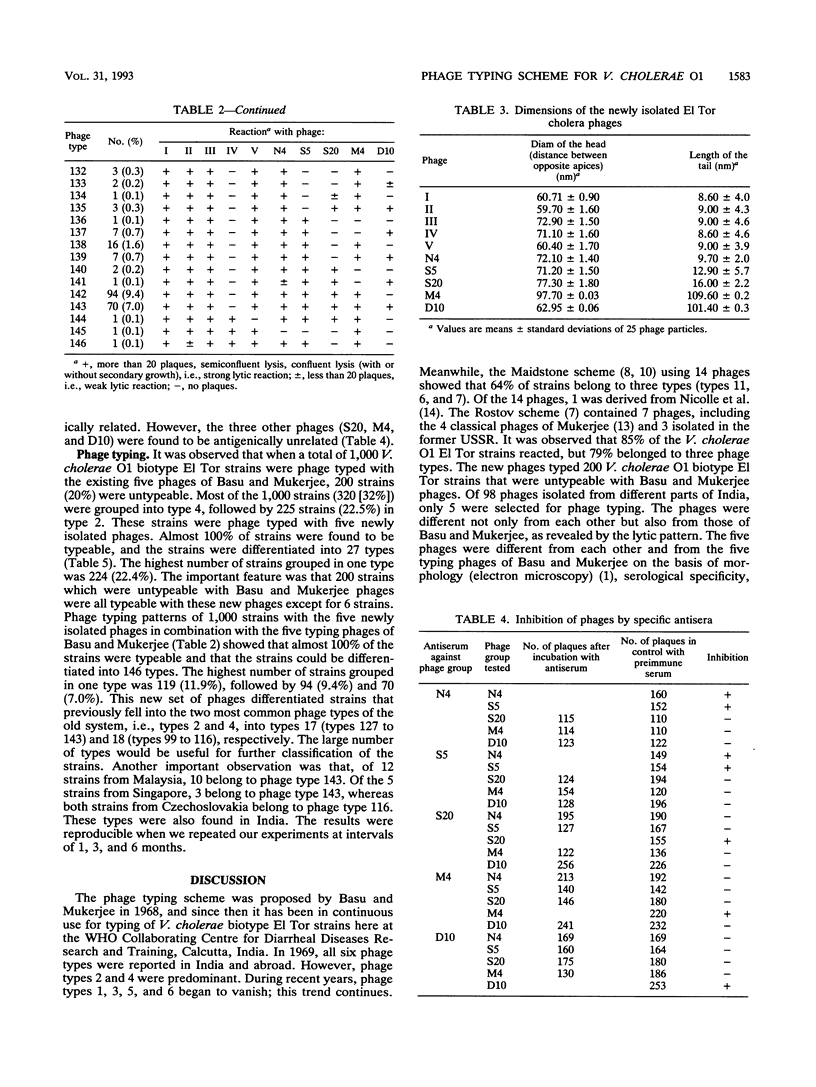
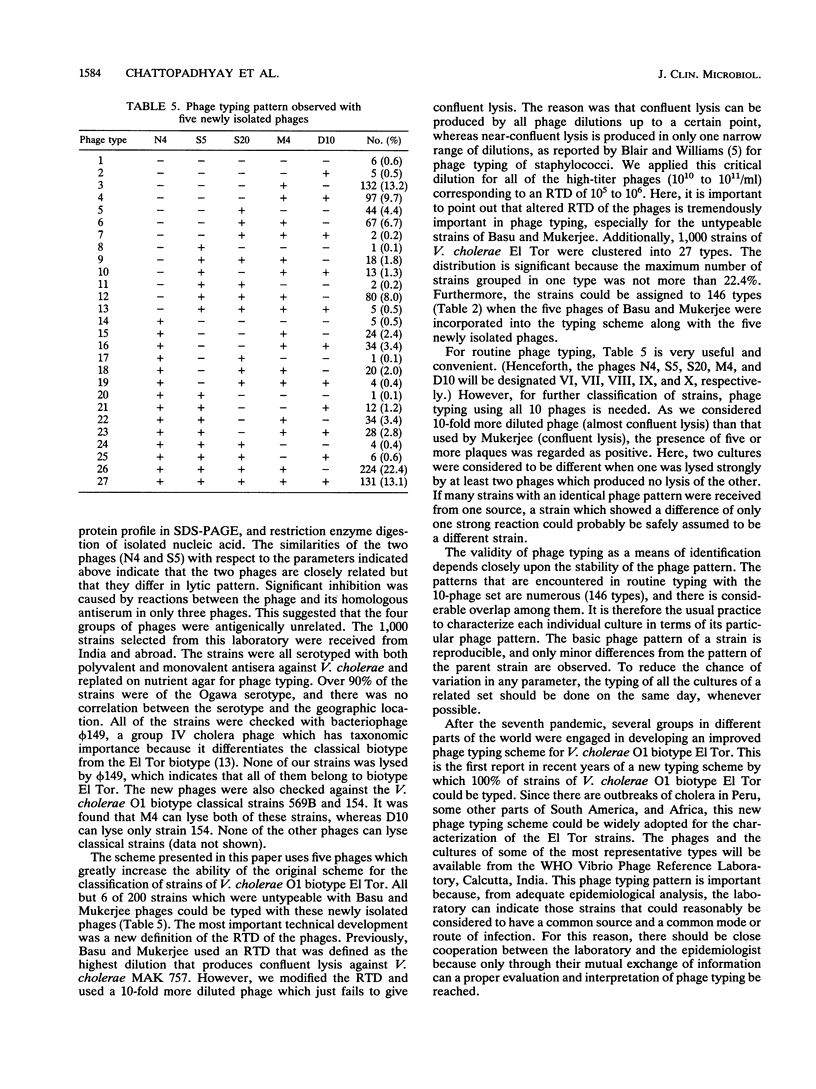

Images in this article
Selected References
These references are in PubMed. This may not be the complete list of references from this article.
- Ackermann H. W., Kasatiya S. S., Kawata T., Koga T., Lee J. V., Mbiguino A., Newman F. S., Vieu J. F., Zachary A. Classification of Vibrio bacteriophages. Intervirology. 1984;22(2):61–71. doi: 10.1159/000149535. [DOI] [PubMed] [Google Scholar]
- Ansari M. Q., Pal S. C. Phage typing of Vibrio cholerae 01 biotype ElT or strains. Indian J Med Res. 1990 Jul;91:263–265. [PubMed] [Google Scholar]
- Basu S., Mukerjee S. Bacteriophage typing of Vibrio eltor. Experientia. 1968 Mar 15;24(3):299–300. doi: 10.1007/BF02152832. [DOI] [PubMed] [Google Scholar]
- Bradley D. E. Ultrastructure of bacteriophage and bacteriocins. Bacteriol Rev. 1967 Dec;31(4):230–314. doi: 10.1128/br.31.4.230-314.1967. [DOI] [PMC free article] [PubMed] [Google Scholar]
- Drozhevkina M. S., Arutyunov YuI Phage typing of Vibrio cholerae using a new collection of phages. J Hyg Epidemiol Microbiol Immunol. 1979;23(3):340–347. [PubMed] [Google Scholar]
- Ghosh A. N., Ansari M. Q., Datta G. C. Isolation and morphological characterization of El Tor cholera phages. J Gen Virol. 1989 Aug;70(Pt 8):2241–2243. doi: 10.1099/0022-1317-70-8-2241. [DOI] [PubMed] [Google Scholar]
- Levine M. M., Kaper J. B., Black R. E., Clements M. L. New knowledge on pathogenesis of bacterial enteric infections as applied to vaccine development. Microbiol Rev. 1983 Dec;47(4):510–550. doi: 10.1128/mr.47.4.510-550.1983. [DOI] [PMC free article] [PubMed] [Google Scholar]
- NICOLLE P., GALLUT J., LE MINOR L. [Lysogenic, phagetyping, serological and biochemical study (cholera-red reaction and search for lysine decarboxylase) of a collection of Vibrio cholerae and Vibrio El-Tor]. Ann Inst Pasteur (Paris) 1960 Nov;99:664–671. [PubMed] [Google Scholar]
- Niyogi S. K., De S. P. Prevalence of biotypes, serotypes & phage-types of Vibrio cholerae 0-1 in India (1975-1985). Indian J Med Res. 1987 Jan;85:1–4. [PubMed] [Google Scholar]




